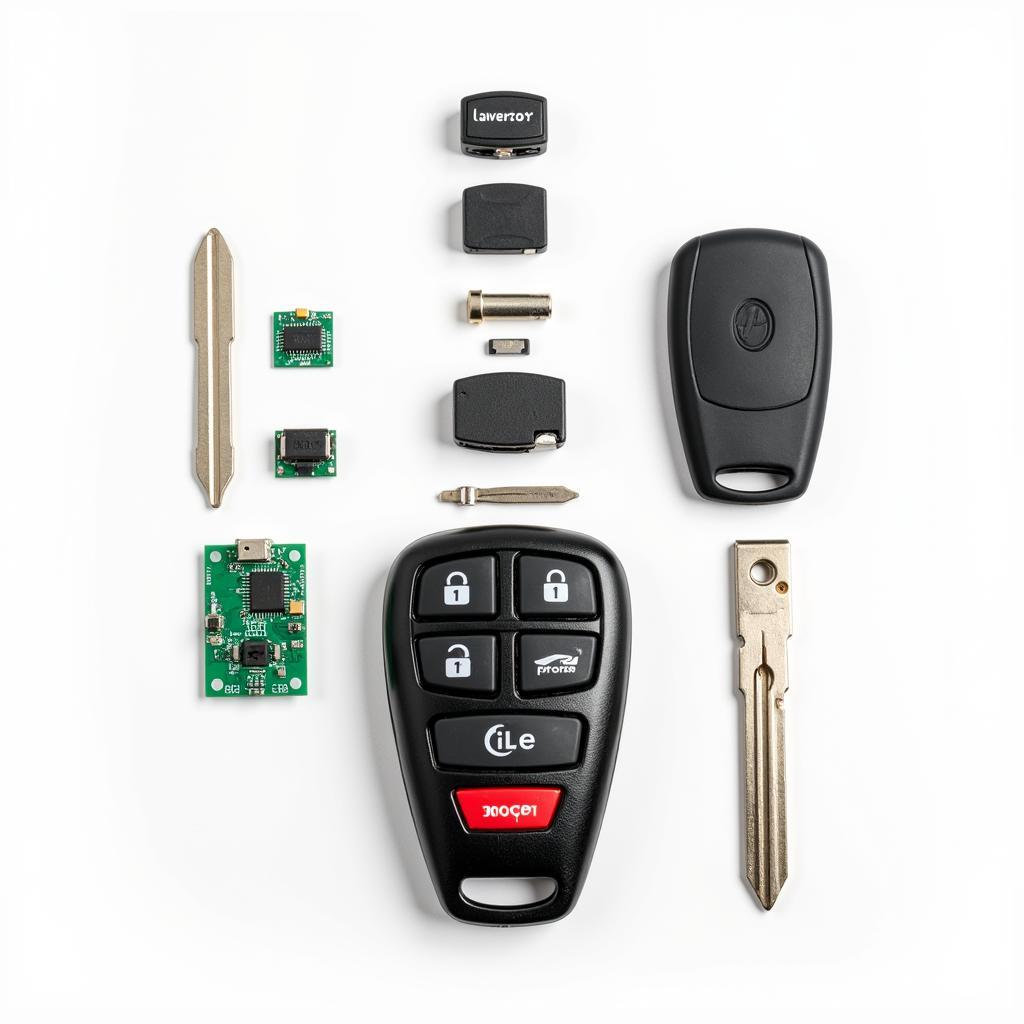A dead battery in your Skoda Fabia can be incredibly frustrating. This comprehensive guide tackles the common issue of “Skoda Fabia battery drain,” providing you with the knowledge and tools to diagnose and fix the problem. We’ll explore the various reasons behind excessive battery drain, from faulty components to parasitic draws, and offer practical solutions.
Understanding Skoda Fabia Battery Drain
Battery drain occurs when your Skoda Fabia’s battery loses charge faster than it should, even when the car is off. This can leave you stranded with a car that won’t start. Identifying the cause is the first step towards a solution.
Common Causes of Battery Drain
- Faulty Alternator: The alternator recharges the battery while the engine is running. A malfunctioning alternator can prevent the battery from charging properly, leading to a drain.
- Parasitic Draw: Even when your car is off, certain electrical components continue to draw power, such as the clock, radio memory, and alarm system. A parasitic draw occurs when one of these components malfunctions and draws excessive power, draining the battery.
- Interior Lights: Leaving interior lights on overnight is a common culprit of battery drain.
- Door Switches: A faulty door switch can trick the car into thinking a door is open, keeping interior lights or other systems active and draining the battery.
- Glove Box Light: Similar to interior lights, a glove box light that stays on due to a faulty switch can drain the battery.
- Boot Light: A malfunctioning boot light switch can contribute to battery drain.
- Aftermarket Accessories: Incorrectly installed aftermarket accessories, like stereos or alarms, can create a significant parasitic draw.
 Skoda Fabia Battery Location
Skoda Fabia Battery Location
Diagnosing the Problem
Identifying the source of the drain requires some detective work. Here’s a step-by-step guide:
- Test the Battery: Use a multimeter to check the battery’s voltage. A fully charged battery should read around 12.6 volts.
- Check the Alternator: With the engine running, the voltage should increase to around 14 volts. If not, the alternator may be faulty.
- Identify the Parasitic Draw: With the car off and all doors closed, use a multimeter to measure the current draw between the negative battery terminal and the negative battery cable. A draw of more than 50 milliamps could indicate a problem.
- Isolate the Circuit: Remove fuses one by one while monitoring the current draw with the multimeter. When the draw drops significantly, you’ve identified the circuit with the problem.
Using a Multimeter Effectively
A multimeter is your best friend when diagnosing battery drain. Make sure you understand how to use it correctly to get accurate readings.
Fixing the Battery Drain
Once you’ve identified the culprit, you can take the appropriate steps to fix the problem. This might involve replacing a faulty component, such as the alternator, a door switch, or the battery itself. If the issue is an aftermarket accessory, ensure it’s correctly installed and wired.
Resetting the ECU
In some cases, resetting the Engine Control Unit (ECU) might resolve software-related battery drain issues.
“A faulty ECU can sometimes contribute to battery drain,” says John Miller, a seasoned automotive electrical engineer. “Resetting the ECU can often resolve this issue.”
how tl reset anti theft 09 dodge nitro
Preventing Future Battery Drain
Regular maintenance can help prevent future battery drain issues. Here are some tips:
- Regularly check your battery’s voltage.
- Ensure all lights are off when the car is parked.
- Address any electrical issues promptly.
- Have your alternator checked during regular service intervals.
“Proactive maintenance is key to a healthy battery,” adds Sarah Chen, an automotive technician with over 15 years of experience. “Regular checks and prompt repairs can save you from the headache of a dead battery.”
Conclusion
Skoda Fabia battery drain can be a frustrating issue, but with the right knowledge and tools, you can diagnose and fix the problem. This guide provides you with the necessary steps to get your Skoda Fabia back on the road. Remember to practice safe handling of electrical components and consult a professional if you’re uncomfortable working on your car’s electrical system.
FAQ
- How long does a Skoda Fabia battery typically last? A Skoda Fabia battery usually lasts 3-5 years.
- Can extreme temperatures affect battery life? Yes, both extreme heat and cold can shorten battery life.
- What are the signs of a failing alternator? Dim headlights, flickering dashboard lights, and difficulty starting the car are signs of a failing alternator.
- Is it safe to jump-start a Skoda Fabia? Yes, it’s safe to jump-start a Skoda Fabia, but follow the correct procedure to avoid damage.
- How can I test my car battery at home? You can test your car battery at home using a multimeter.
- What is the average cost of a new Skoda Fabia battery? The cost of a new Skoda Fabia battery varies, but typically ranges from $100 to $200.
- Can I drive my Skoda Fabia with a bad alternator? You can drive for a short distance, but the battery will eventually drain and the car will stop.

